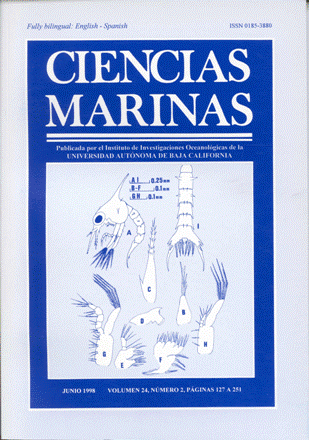The winter air-water CO2, net flux is not significant in the Gulf of California to the north of 30°N
Main Article Content
Abstract
It has been reported that in the Gulf of California tidal energy dissipates at great rates from the region of the midrift islands to the north, with practically no dissipation in the central and southern regions of the gulf. It has also been reported that due to this energy dissipation, in places like Canal de Ballenas, strong water column mixing produces greater CO2, partial pressure (pCO2,) in the surface seawater than in the atmosphere, even during summer. This causes the sea to be a source of CO2, to the atmosphere. We characterized the spatial distribution of surface pH and pCO2, under "winter" conditions, in order to explore the possibility of the role of the northern Gulf of California (NGC), north of 30ºN, as a source of CO2, to the atmosphere. Our results do not support the hypothesis of a significant air-water CO2, flux in the NGC. Mean surface pC02, during winter 1996 was 355 µatm, with a standard error (s n–0.5) of 5 µatm. This mean was not significantly different from the atmospheric value, at 95% confidence level. Thus, the NGC acts neither as a source nor a sink of CO2.
Downloads
Article Details
This is an open access article distributed under a Creative Commons Attribution 4.0 License, which allows you to share and adapt the work, as long as you give appropriate credit to the original author(s) and the source, provide a link to the Creative Commons license, and indicate if changes were made. Figures, tables and other elements in the article are included in the article’s CC BY 4.0 license, unless otherwise indicated. The journal title is protected by copyrights and not subject to this license. Full license deed can be viewed here.

